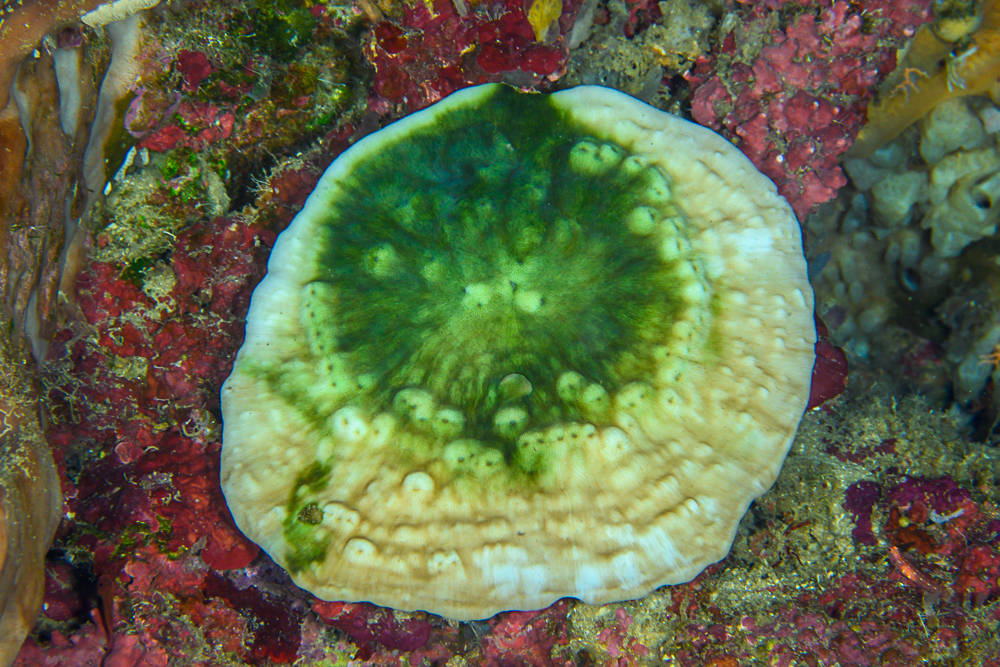
Reef aquarists are quite familiar with the endolithic life (“living within or penetrating deeply into stony substances”), primarily within live rock since they’re so important to starting a reef tank.
Reef-building stony corals also harbor an astonishing diversity of microorganisms, including endosymbiotic microalgae, bacteria, archaea, and fungi, all within their skeletons. Could these endolithic algae have a much more important role than a parasitic one? If they have a certain relationship with their host under bright light, could this relationship change under different conditions?
What is Endolithic Algae?
Endolithic algae live deep within the skeleton of living corals, below the coral living tissue, and are exposed to very low light intensities. While we are very aware of the symbiotic algae living within the outer few millimeters of living coral tissue (i.e. zooxanthellae), there is also a diversity of fauna and flora living deeper inside the skeleton.
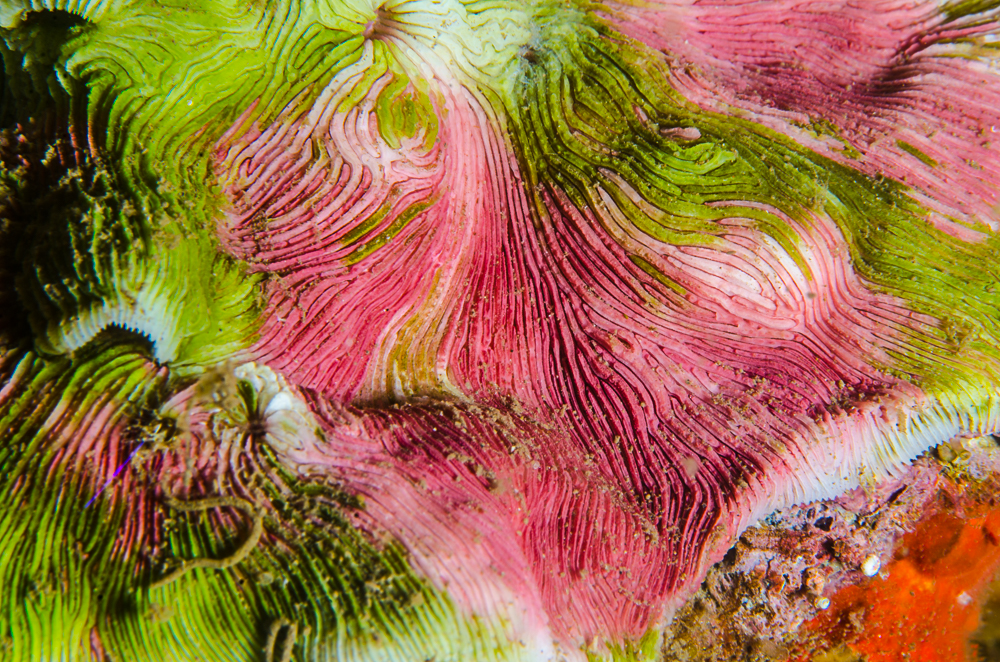
A Poorly Known Cryptic Flora:
Far from being devoid of life, the skeleton of a coral harbors a wide array of algae, endolithic fungi, heterotrophic bacteria, and other boring eukaryotes, often forming distinct bands of color visible to the bare eye. Some functions of these endolithic microorganisms are critical in coral health, such as nutrient cycling and metabolite transfer, but they are poorly known, particularly by aquarists.
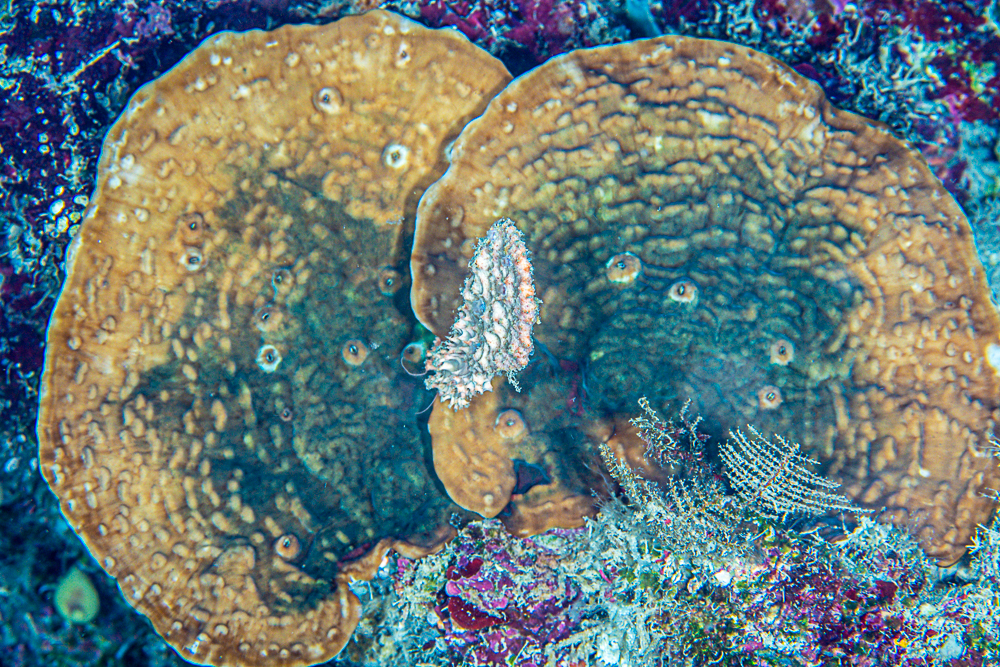
A Much More Common Phenomenon:
This particular symbiotic relationship between a coral and endolithic algae is particularly obvious in the deep-dwelling corals, but not only there. While they can often be observed with the naked eye in deep water corals, these same endolithic algae also live deep within the skeleton of shallow water corals. A green stain can often be observed within corals when we frag them; this is the endolithic algae! Endolithic algae also infect other organisms such as bivalves like oysters or Tridacnid clams.
The dense green band in the skeleton that can be observed underneath the tissue of many coral species is often dominated by the filamentous green algae Ostreobium spp. (Siphonales, Chlorophyta). This diverse genus can penetrate both dead carbonate substrates as well as the skeletons of living corals. Recent molecular studies have confirmed the astonishing genetic diversity of this group, revealing up to 80 taxonomic units at the near-species level. The research also exposed the presence of other, less abundant, boring green microalgae closely related to Phaeophila, Bryopsis, Chlorodesmis, Cladophora, Pseudulvella, and red algae from the Bangiales order, all found in coral skeletons.
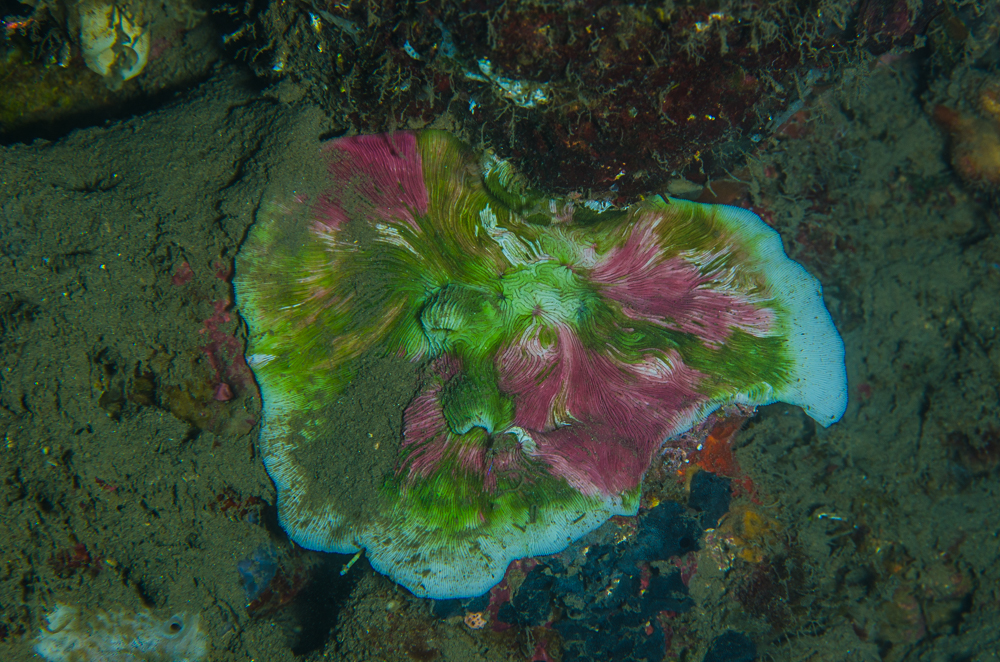
The photosynthetic adaptations of these endolithic algae to low light levels and low metabolic activity rates enable the algae to grow in even deeper habitats. The action spectrum of Ostreobium photosynthesis extends into far-red wavelengths, but the underlying molecular mechanisms are little known.
Some Disadvantage for Corals:
Endolithic organisms are conspicuous parasites that colonize a huge range of organic and inorganic carbonate substrates, including the outer layers of mollusk shells, from which they derive carbon for use in photosynthesis, thus contributing to bioerosion. The main microboring taxon, Ostreobium, can actually dissolve up to 0.9 kg of CaCO3 per m2 of reef per year, which is quite astonishing.
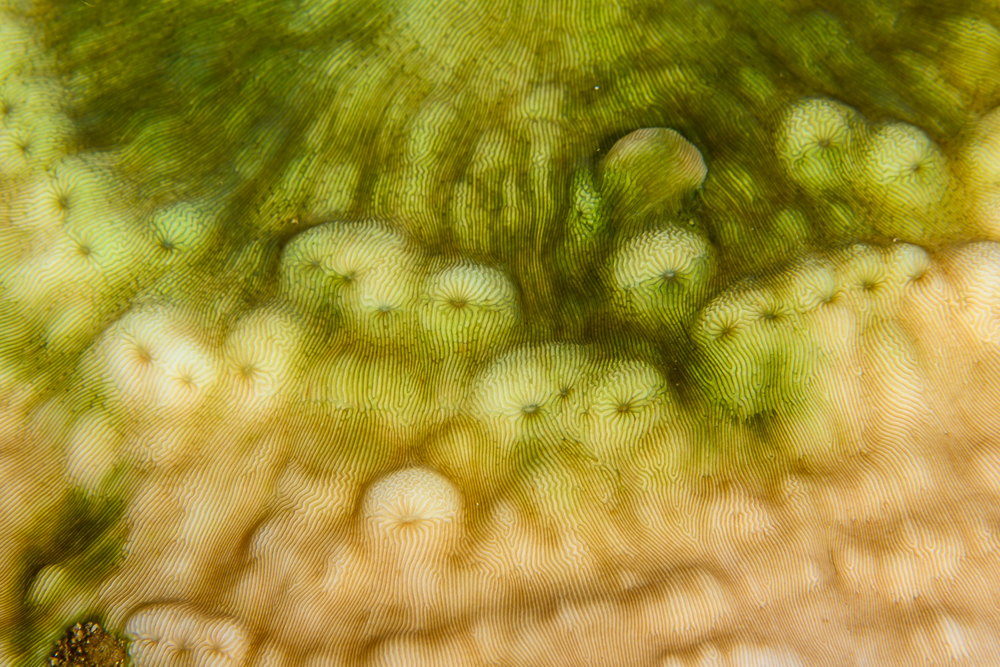
But also some advantages:
Earlier studies suggested that the complex assemblages of microorganisms populating the coral skeletons may influence coral health and disease mainly via their important role in bioerosion, primary production, and nutrient cycling. Endosymbiotic algae are also hypothesized to provide benefits to the coral host during stress, and there are widespread reports of their associations with reef-building corals. It was shown that, during coral bleaching events, endolithic algae undergo rapid population growth produced by the different light penetration into corals due to bleaching, and are able to pass photo-assimilated carbon directly to the bleached host tissues. These algae assimilate inorganic carbon during the day and transfer photoassimilates (as lipids) into the tissues of the coral. These discoveries led to the thought that these endolithic algae are more beneficial to the coral than previously thought, especially in deep-reef environments where light is scarce and this algae can thrive, unlike light-hungry zooxanthellae.
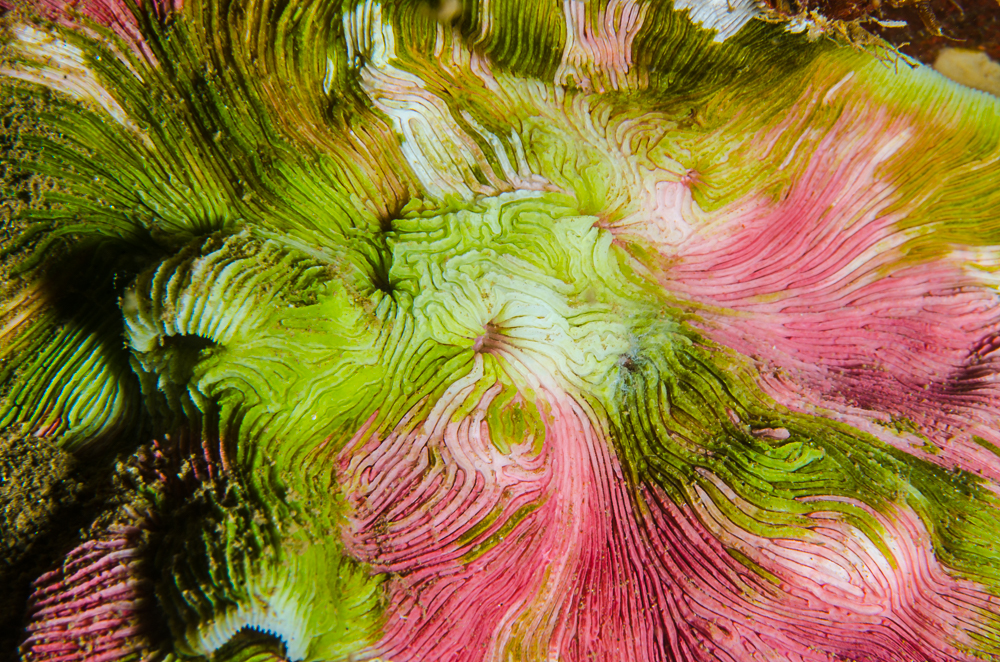
Evidence also supports a mutualistic association that drastically reduced light exposure. Under the low light conditions of the deep mesophotic forereef slope, Ostreobium might complement Symbiodiniaceae’s function by providing photosynthates to the host. These endolithic algae are adapted to photosynthesize in near-darkness with increased numbers of light-harvesting xanthophyll pigments that can use shorter wavelengths and optimize light capture when compared to other green algae. Again, to reiterate, these algae that live deep within the coral skeleton in shallow water hard corals also live right below the tissue in deep water hard corals.
Truly deep-water corals are unknown in the aquarium industry due mainly to the difficulty and diver-risk of collecting them. But they, and their endolithic algae symbionts, could make a truly captivating display when paired with some of the very rare or hard-to-obtain deepwater reef fish!
References
Rouzé, H., Galand, P.E., Medina, M. et al. Symbiotic associations of the deepest recorded photosynthetic scleractinian coral (172 m depth). ISME J 15, 1564–1568 (2021). https://doi.org/10.1038/s41396-020-00857-y
Pernice, M., Raina, JB., Rädecker, N. et al. Down to the bone: the role of overlooked endolithic microbiomes in reef coral health. ISME J 14, 325–334 (2020). https://doi.org/10.1038/s41396-019-0548-z
Further Reading:
del Campo, J., Pombert, JF., Šlapeta, J. et al. The ‘other’ coral symbiont: Ostreobium diversity and distribution. ISME J 11, 296–299 (2017). https://doi.org/10.1038/ismej.2016.101
“Endolithic.” Merriam-Webster.com Dictionary, Merriam-Webster, https://www.merriam-webster.com/dictionary/endolithic. Accessed 28 Jul. 2023.




